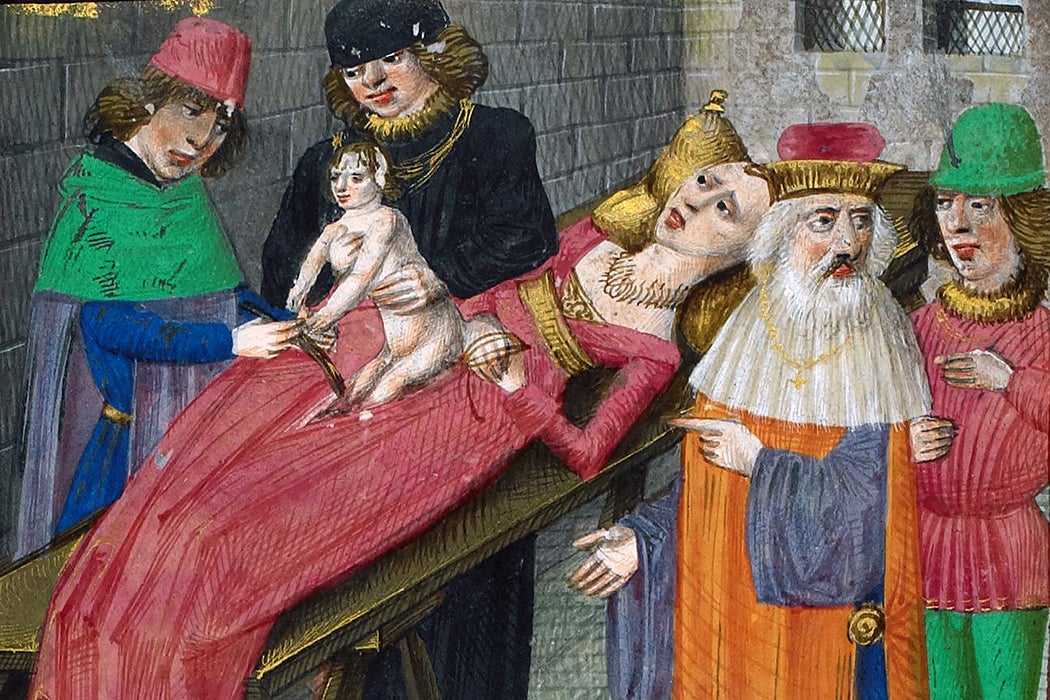The Ugandan runner Annet Negesa has been speaking out about the damage she suffered after being pushed to have surgery for her intersex condition. The practice of encouraging surgery for intersex people, particularly those whose genitals have both “male” and “female” characteristics, has a long history. The historian Leah DeVun writes that some of our ideas about surgically “correcting” these issues go back to a shift in the profession of surgery seven centuries ago.
Before the thirteenth century, DeVun writes, surgery—which focused on treating growths, wounds, and injuries—was an unregulated business where barbers and others with no formal training, including women as well as men, competed for customers. But, in the middle of the thirteenth century, an elite group of surgeons sought to change this, writing formal textbooks and promoting surgery for a wider variety of ailments.
This shift came at a time when health care in general was increasingly professionalized—and masculinized. Male doctors promoted licensing requirements, which allowed courts to prosecute other healers—often women—for practicing without a license. DeVun argues that it’s no coincidence that men benefiting from a specifically male professional status claimed the authority to determine individuals’ sexes.
Before this era, DeVun writes, Europeans didn’t necessarily hold a binary view of the sexes. One common model of sexual difference during the early Middle Ages, drawing on Hippocratic ideas, viewed sex as a spectrum reflecting a mix of heat, cold, dryness, and moisture in the body. In this view, those factors shaped the body, producing a range of types that included “hermaphrodites,” the mid-point between masculine men and feminine women.
In contrast, the Aristotelian model, which became popular in thirteenth-century Europe, viewed “male” and “female” as discrete categories. That meant that genitals that weren’t easily identified as male or female were “mistakes of nature” that surgeons were justified in trying to correct.
Weekly Newsletter
In his book Great Surgery, published in 1296, the French surgeon Lanfranc of Milan devoted a chapter to hermaphroditism, classifying it among ailments including hemorrhoids, kidney stones, and vaginal growths. Another late thirteenth century text, The Secrets of the Philosophers, appealed to the authority of “the ancient judges,” who, it said, called for hermaphrodites to choose their sex—either having their testicles removed or closing up their vaginal opening:
And when they have taken the one or the other, that is to say the nature of the man or the woman, if someone finds them practicing that which they had denied, then they must be punished bodily, because it is against nature to use both.
In this time period, sex was an important legal issue, helping to determine not just who someone could marry, but whether they could inherit property, testify in court, or work in particular industries. By the early fourteenth century, surgeons had established themselves as authorities who could be called to testify about the sex of a party in a dispute over marriage or inheritance.
Today, athletes like Negesa continue to face similar regimes of medical authority.







